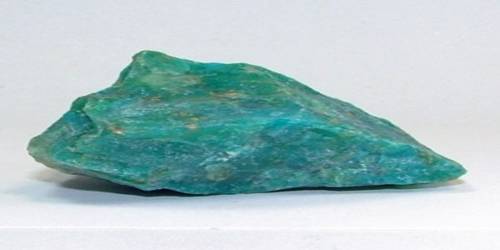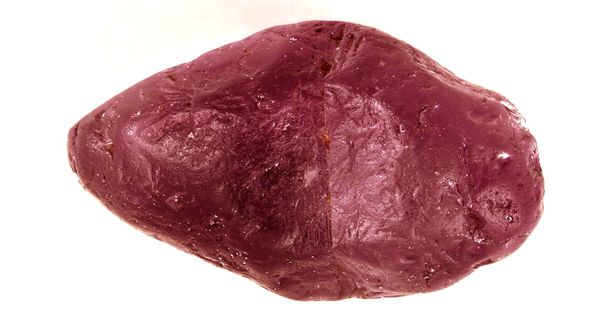Chrysocolla is a hydrated copper phyllosilicate mineral with formula: Cu2-xAlx(H2-xSi2O5)(OH)4·nH2O (x<1) or (Cu, Al)2H2SiO5(OH)4·nH2O. It is a greenish-blue mineral consisting of hydrated copper silicate, occurring as opaline crusts and masses. Its color can be among the brightest shade of blue and green and is caused by its copper content. The structure of the mineral has been questioned, as spectrographic studies suggest material identified as chrysocolla may be a mixture of the copper hydroxide spertiniite and chalcedony.
General Information
- Category: Phyllosilicate mineral
- Formula: Cu2-xAlx(H2-xSi2O5)(OH)4nH2O (x<1)
- Crystal system: Orthorhombic
- Unknown space group

Properties
Chrysocolla has a cyan (blue-green) color and is a minor ore of copper, having a hardness of 2.5 to 3.5. It forms in the oxidation zones of copper-rich ore bodies.
- Color: Blue, cyan or blue-green, green
- Crystal habit: Massive, nodular, botryoidal
- Cleavage: none
- Fracture: Irregular/uneven, sub-conchoidal
- Tenacity: Brittle to sectile
- Mohs scale hardness: 2.5 – 3.5
- Luster: Vitreous to dull
- Streak: white to a blue-green color
- Diaphaneity: Translucent to opaque
- Specific gravity: 1.9 – 2.4
Occurrence
It is typically found as botryoidal or rounded masses and crusts, or vein fillings. Because of its light color, it is sometimes confused with turquoise.
It is of secondary origin and forms in the oxidation zones of copper ore bodies. Associated minerals are quartz, limonite, azurite, malachite, cuprite, and other secondary copper minerals.
Notable occurrences include Bacan Island Indonesia, Israel, Democratic Republic of Congo, Chile, Cornwall in England, and Arizona, Utah, Idaho, Colorado, New Mexico, Michigan, and Pennsylvania in the United States.
Information Source;
















